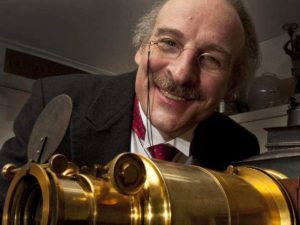Chaudière Falls is an Indigenous Cathedral

By Lindsay Lambert
The Chaudière Falls and Islands have been the great Indigenous sacred and peaceful meeting place since time immemorial. From the archaeological record, it is at least 5,000 years. This pre-dates the Great Pyramid at Giza and Stonehenge. Samuel de Champlain observed Algonquin people making tobacco offerings in ceremony to the Falls when he travelled here in 1613.
Although the Chaudière Falls and Islands are in Algonquin territory, the area was considered a neutral place where anyone could meet. People would come from huge distances. They would camp on the riverbank where the Canadian Museum of History is now, leave their weapons behind, and canoe to the Islands to gather in peace. It was a place of communications and governance. Enemies met here. It is a place without War, which may be unique in this world. This use ended with European settlement and industry, but that is just a moment in time.
The Chaudière Falls were sadly submerged and effaced by the construction of the Ring Dam across the entire span in 1908. Prior to that, they were Ottawa’s oldest and most beloved tourist attraction. They were second only to Niagara, and many people considered them more interesting in their variety and setting. When Ottawa petitioned Queen Victoria to make this Canada’s capital in 1857, Lady Head, wife of Governor General Sir Edmund Head, painted the Falls from Major’s Hill Park. That painting was part of the package, and the beauty of the scenery depicted influenced Her Majesty’s decision. Ottawa was called “a city of cascades” with the Chaudière Falls being “a hundred rivers struggling for a passage.” People came here to see them and bought postcards & souvenirs.
Prime Minister Mackenzie King commissioned a Master Plan for the long-term growth and development of the capital region. This is Jacques Greber’s Plan for the National Capital, published in 1950. It gives us Confederation Square, the Greenbelt, the Queensway and the Parkway among others. Greber specifies on page 230 that “The most effective improvement will be the central park at the Chaudière Falls” once the “heavy and obnoxious industries” are gone, and “the Falls will always remain the main feature of Ottawa’s natural setting.” From page 250, “Such proposal aims to give a more dignified environment to the representative buildings of the nation…The restoration of the Chaudière Islands to their primitive beauty and wildness, is perhaps the theme of greatest importance, from the aesthetic point of view – the theme that will appeal, not only to local citizens, but to all Canadians who take pride in their country and its institutions.”
The National Capital Commission was established in 1958 to implement Greber’s recommendations. Between 1969 and 1972 they purchased 40% of E.B. Eddy’s industrial site to free 44 acres of shoreline and remove the more polluting elements. They closed the sulphite plant and newsprint mill. As a condition of the sale, the NCC was to have first call on the remaining property.
When Jean Pigott was in charge of the NCC, she wanted to free the Chaudière Falls from the Ring Dam and have Chaudière and Albert Islands as a park along with Victoria Island, but the area was still being used industrially. City of Ottawa politicians and then-Regional Chair Bob Chiarelli wanted to free the Falls in 1998. The City zoned Chaudière & Albert Islands as Parks and Open Space in anticipation of this.
There is also the late Algonquin spiritual leader William Commanda’s vision of undamming the Chaudière Falls, re-naturalizing Chaudière and Albert Islands as parkland, and constructing an Indigenous peace and healing centre on Victoria Island, which has widespread support. Grandfather Commanda was presented with the Key to the City and appointed an Officer of the Order of Canada in recognition of his peace and environmental initiatives.
Domtar bought out E.B. Eddy in 1998, closed the mills in 2007, and put the site up for sale in 2012. The National Capital Commission were expecting to buy it, but the Treasury Board turned down their request for funding. The Windmill Development Group stepped in, and the Ottawa City Council voted to re-zone Chaudière & Albert Islands from parkland to Downtown Mixed Use at their request. Opposition from Indigenous people and Ottawa residents was ignored.
For almost 70 years, the plan was to reclaim the area of the Chaudière Falls and Islands as public parkland. It is only within the past four that this has been inverted in favour of private development.
The Chaudière Falls is an Indigenous cathedral, which has been stolen from the Algonquin and all of us. We need to have them back. It would be a powerful act of reconciliation with First Nations, and it is a place that people of all faiths can be part of and be inspired by. Poets understand this. On May 16th, 1878, William Pittman Lett wrote:
Go, Atheist, stand on its brink
And for a moment pause and think
While gazing on this mighty link
In grand old Creation’s chain?
What would you prefer, a spectacular waterfall and a beautiful central & national park, or a hydro dam and a private condominium and commercial development. What would other Canadians and international visitors come here to see?
Additional articles: http://www.lynngehl.com/black-face-blogging/canada-free-the-dam-falls
Additional images: http://www.lynngehl.com/chaudiegravere-falls.html
Lindsay Lambert, BFA (Honours), is an Ottawa based published historian whose research is rooted in the archival record through a spiritual, justice, and anti-colonial lens. He was born in Swift Current, Saskatchewan, of a Russian immigrant mother and a first generation Canadian English father. Lindsay works hard to keep stories alive in the minds, hearts, and memories of all who are willing to listen and learn. A part of his work is dedicated restoration and the preservation of the sacredness of Chaudière Falls and Islands located downstream in what is now called the Ottawa River.


